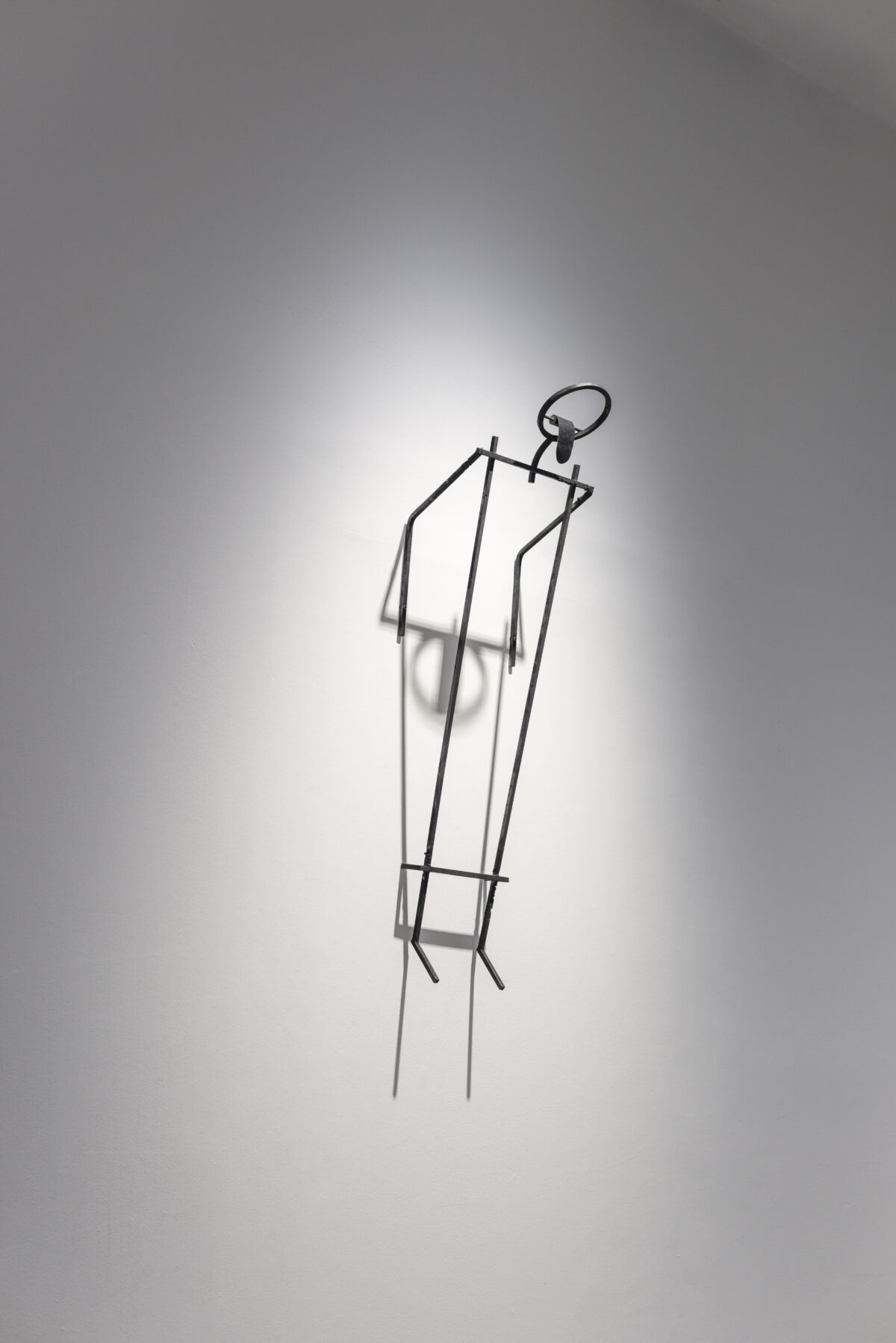THE GREAT LEAP OR ATTITUDE
THE GREAT LEAP OR ATTITUDE
Steel, leather / 2015
The steel sculpture shows a man. The form is wound around the tongue and is made of leather.
Mao Zedong’s policy during the implementation of the 5-year economic plan, known as the Great Leap Forward (1958-1962), followed the slogans: more, better, faster and cheaper. Mao wanted to make China the world’s leading industrial power at all costs. The implementation of the assumptions of the Great Leap Forward has wreaked unprecedented havoc in every area of the economy and has hit rural areas the most drastically. The village was subjected to strenuous collectivization, confiscating the peasants’ property and concentrating them in gigantic people’s communes, where food was distributed in communal canteens, depending on the individual’s merits. Various types of “substitute foods” have been introduced in the form of, for example, paper pulp. Soon there was a famine across China unlike anything the world had ever seen before.
The hungry villagers ate everything they could get their hands on: leaves, tree bark, softened skin. Zhu Erge, who witnessed half of his village’s population starving to death, recalled: We were soaking leather chairs. After soaking, we boiled the leather from them and ate it, cut into tiny pieces.
In modern China, the skin is still being eaten. A 75-year-old Tibetan monk who spent 33 years in prison for political beliefs reported:
I was handcuffed, kicked, and beaten with a nailed truncheon. When the investigation was over, I was transferred back to the prison for a seven-year sentence. For the first eight months my arms and legs were chained […]. There was a scarcity of food. I dipped my shoes in water and ate them piece by piece.


 China
China 
